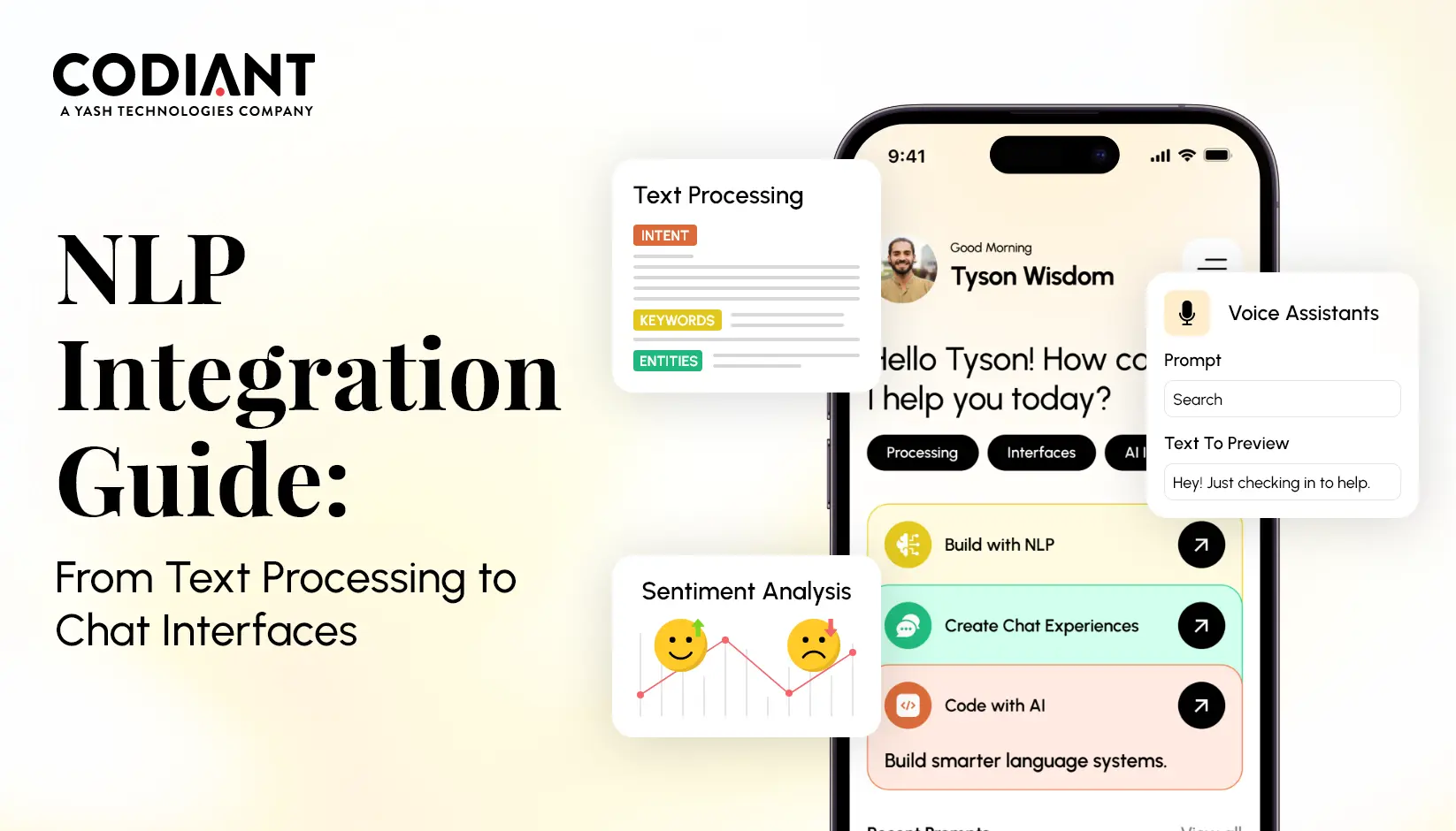Ways to Engage Online Shoppers: Personalizing a Seamless Shopping Experience
Table of Contents
Subscribe To Our Newsletter

Today’s e-commerce environment is challenging from almost any perspective because of price pressure from discounters, market disruption from online players, and increased price transparency for online shoppers. Traditional differentiation approaches for setting up your e-commerce store seem ineffective as competitors can easily duplicate them.
The online shoppers turning to your platform expect more than just a vast product selection—they’re seeking a seamless and engaging shopping experience. So, what next? What approach works here best? Go for “PERSONALIZATION”.
By creating personalized, unique shopping experiences for each customer, you can stand out, build stronger loyalty, and thrive in a crowded marketplace where differentiation is key. Using personalized approaches, online vendors can easily engage customers and create unique experiences as per individual choices.
In this blog, we will explore effective strategies to engage online shoppers by personalizing their journey and ensuring a frictionless experience.

Understand Customer Using Data Analytics
To personalize the shopping experience, businesses must analyze data to understand customer preferences. It provides customers’ purchase history that allows for customized experiences including personalized recommendations, discounts, and targeted emails. Machine learning algorithms can improve privacy by predicting future behavior. It helps buyers come up with relevant product ideas.
Key strategies for personalization:
- Understand Customer Patterns: Analyze customer behavior to spot shopping trends and personalize experiences. Track browsing history, purchase habits, and popular searches to better meet customer needs.
- Product Recommendations: Use data to offer personalized product suggestions and discounts. Rely on browsing history, past purchases, and real-time actions to provide recommendations that increase satisfaction and repeat sales.
- Machine Learning Integration: Machine Learning can predict future buying behavior and enhance shopping experiences. It helps optimize pricing, anticipate customer needs, and improve product recommendations based on trends and preferences.
Did You Know?
Amazon uses data analytics to make online shopping better by personalizing recommendations for each customer. This means showing products that are often bought together, suggesting items that can be bundled, and sending targeted follow-up emails with relevant suggestions. It helps customers to feel more valued and satisfied.
Create a User-Friendly Website Interface
A user-friendly website is key to a smooth shopping experience. Shoppers want to find what they need quickly and easily. If the design is complicated or hard to navigate, it can cause frustration, abandon carts, and affect your brand. Simple layouts, clear actions, fast loading times, and reduced cart abandonment help keep customers happy, boost sales, and encourage them to return.
Here are key elements to focus on:
- Responsive Design: Design a website that is mobile-optimized or consider building a fashion ecommerce mobile app that adapts to different screen resolutions. This helps create an easy, touch-friendly experience. More buyers use smartphones and tablets to shop for products, and an unresponsive mobile site can cost you lost sales.
- Simple Navigation: Clear and simple navigation is the critical aspect for buyers to hit the goal. Organized categories and filters make it easier for them to find products online. A search bar with auto-suggestions makes searching easy and fast. Additionally, the latest reviews also suggest users the path to explore products range and implement the best buying experience.
- Faster Loading Times: It has been estimated that 50% of consumers expect a website to load in two seconds or less, and any delay can hurt conversion rates. Optimize images, scripts, and design elements to ensure fast loading on all devices. Slow load times can increase bounce rates, reduce satisfaction, and result in lost sales. Use caching mechanism, files compression, and a content delivery network (CDN) to further increase speed and performance.
Recommend Personalized Products
Giving personalized product recommendations is an effective way to engage online shoppers. Imagine a customer browsing for running shoes. Recommending complementary items like running socks or sports nutrition can lead to a more satisfying purchase.
Personalized recommendations can be rooted in various parts of the shopping journey:
- Homepage Suggestions: Show trending or popular items that match the shopper’s previous purchases. By understanding their browsing history and shopping behavior, it becomes easy to create a personalized selection that grabs customers’ attention on homepage, keeps them interested, and makes them feel valued.
- Checkout Page: Suggest extra products based on what customers have in their cart to encourage upselling or cross-selling. By showing relevant add-ons or complementary items during checkout, you can boost the average order value and ultimately, give a more satisfying shopping experience to customers.
- In-Page Recommendations: While customers browse products, suggest related items that pair well with their selections to enhance their shopping experience. Like, Codiant did while developing a reliable ecommerce solution “Gift Reegalo” for corporate gifting solutions.
Implement Omnichannel Strategies
People expect a smooth experience when they shop online, whether they use a website, app, or social media. Omnichannel strategies can make sure a smooth customer experience across different platforms by setting communications and relationships accordingly. This way businesses can build trust and improve customer satisfaction. It’s more or less like a one-size-fits-all approach that makes shopping easier for customers and promotes brand loyalty.
- Create a Unified Customer Experience
Connect every channel to help provide a consistent customer experience. Make sure that the branding, messages, and customer services are consistent across your website. Social media and mobile apps help customers feel valued, build trust, and strengthen your relationship with your brand. - Integrate Customer Data for Personalization
Leverage customer data to deliver personalized recommendations and a consistent experience across devices. By analyzing data from various sources, businesses can better understand preferences. For instance, if customers view products on their desktop, those items can show up in the mobile app. - Encourage Purchase Completion Across Platforms
Customers love shopping in which they can complete their purchases by switching between platforms easily. Features like persistent shopping carts and easy logins let them start shopping on one device and continue another without losing their progress. This flexibility makes shopping less frustrating, boosts conversion rates, and increases sales and customer loyalty.
Did You Know?
Sephora offers a fully omnichannel experience. Sephora is a global beauty products retailer offering a smooth shopping experience through its mobile app. It allows customers to book in-store makeovers and check if products are available. After services, makeup artists add products to the customer’s profile, which also supports virtual try-ons. Customers can see their loyalty points and know which sales associates can access them along with their purchase history.
Incorporate Loyalty Programs and Rewards
Reward customers for their loyalty with exclusive deals, discounts, and special offers. Loyalty programs provide tangible benefits that encourage them to return. These programs should be easily accessible! It helps customers to track points, redeem rewards, and get tailored offers on the website or app.
- Engagement with Rewards: Exclusive rewards and discount deals on past purchases develop long-term relationships with customers. By keeping customers captivated, we nurture long-lasting relationships and encourage them to return.
- Accessibility and Management: Loyalty programs ought to offer an intuitive platform for tracking points, redeeming rewards, and accessing customized offers. This results in higher consumer satisfaction and consumer retention.
- Personalized Incentives: Tailored incentives can deepen customer engagement. By offering personalized experiences, businesses can build trust and drive repeat sales. Ultimately, it enhances overall customer satisfaction and lifetime value.
Did You Know?
Nike excels in personalization, allowing customers to personalize clothes and shoes with a 3D sneaker platform. Through NikePlus loyalty program, members enjoy benefits like reserving items, scanning QR codes for availability, and using Instant Checkout. They also get personalized services like Nike Expert Studio and Nike by You for custom fittings and consultations.
Use AI Chatbots for Instant Assistance
Customers prefer ecommerce sites that offer quick or immediate responses to their queries. They select sites that are embedded with AI-powered chatbots! These intelligent systems can solve general queries, direct customers throughout the shopping journey, and also, customize product suggestions according to user behavior. For instance, if a buyer remains on a product page or abandons their shopping cart, a chatbot can proactively engage them with helpful recommendations or limited discount deals, pushing them toward completing their purchase.

- Round-the-clock Support: AI-powered chatbots provide 24*7 customers assistance, assuring customers receive instant answers to their questions. This prompt assistance decreases response times, increases customer satisfaction, and enhances the entire shopping experience.
- Proactive Engagement Strategies: Chatbots monitor customer behavior and engage proactively. If a shopper spends too long on a product page or abandons their cart, then chatbot can start a conversation. It provides helpful recommendations or discounts that encourage him/her to complete the purchasing process.
- Personalized Recommendations and Support: These AI-powered robots can effortlessly personalize experience with customer data. Chatbots can suggest products, answer questions, and solve problems quickly, making shopping more enjoyable for customers.
Highlight the Value of Customer Reviews
Whenever buyers select an e-commerce store to buy products, they look for reviews and recommendations. By showing customer reviews, star ratings, and user-generated content including photos and videos, it becomes easy for businesses to build trust and enhance customer engagement. Furthermore, sharing on social media platforms enhances brand credibility, displays real testimonials to improve shopping experience.
- Build Trust with Social Proof: Showing customer reviews, ratings, and user-generated content can boost brand trust and credibility. Potential buyers feel more confident when they see real feedback, photos, and experiences from others, making them more likely to buy and stay loyal.
- Develop a Great Shopping Experience: User-generated content with personalized suggestions creates a more real shopping experience. It helps customers connect with the brand, understand product benefits, and make better choices. This builds trust, boosts engagement, and increases sales and loyalty.
- Boost Customer Engagement: Inspiring buyers to give reviews and ratings and share their true experiences on social media creates a sense of community, increases engagement, and builds brand trust. This helps attract new customers, keep loyal ones, and improve brand visibility.
Conclusion
An effective e-commerce platform will ensure that customers feel their needs are understood. It encourages them to return for future purchases and build long-term relationships with brands. A focus on personalization helps retailers differentiate themselves in a highly competitive market. This ultimately results in better customer retention and higher profits over time.
When hiring a eCommerce development company like Codiant, it’s essential to focus on those that prioritize personalization strategies. With the help of advanced technologies and analytics, these companies can help online retailers create a better shopping experience for their customers. Personalized experiences improve customer loyalty and drive sales. This makes it imperative for businesses to invest in tailored solutions.
Frequently Asked Questions
Personalizing the shopping experience helps customers feel valued and understood. It makes shopping more enjoyable by showing them products that match their preferences and interests. This can lead to higher customer satisfaction and increased sales for businesses.
You can personalize your shopping experience by creating an account on the website, which allows you to receive product recommendations based on your past purchases. Additionally, you can save your favorite items and get personalized offers and discounts tailored to your preferences.
Examples of personalized shopping features include product recommendations based on browsing history, personalized email newsletters with relevant offers, and tailored search results that highlight items you are likely to be interested in. Some websites also offer customized landing pages that show items based on your preferences.
Website knows your preferences through your browsing history, previous purchases, and the choices you make while shopping. When you create an account and interact with the site, it can track your preferences and suggest items accordingly.
Yes, online stores prioritize your privacy and security. They use secure encryption methods to store and handle your information. Some shops have privacy policies explaining how they protect your data. It is recommended to always look for trusted websites that have secure payment options.
Featured Blogs
Read our thoughts and insights on the latest tech and business trends
How AI Reduces Patient Wait Times by 50% in UAE Hospitals
- January 6, 2026
- Artificial Intelligence
In a Nutshell AI helps UAE hospitals reduce patient wait times by up to 50% using smart triage, predictive scheduling, and automated patient flow management. Emergency departments benefit from faster severity scoring, load balancing, and... Read more
Integrating NLP Into Your Existing App: From Text Analytics to Conversational Interfaces
- December 29, 2025
- Artificial Intelligence
Natural Language Processing has moved from a niche capability to an essential part of modern software, and 2025 has clearly shown its impact. Businesses are no longer rebuilding entire systems to keep up with user... Read more
How to Build an AI-Powered Queue Management System in Dubai, UAE
- December 25, 2025
- Artificial Intelligence
Dubai has been steadily moving toward faster, more efficient public and private services, and this shift has increased the need for systems that reduce waiting time and improve customer flow. With rising footfall across government... Read more




